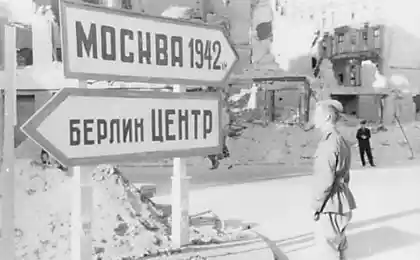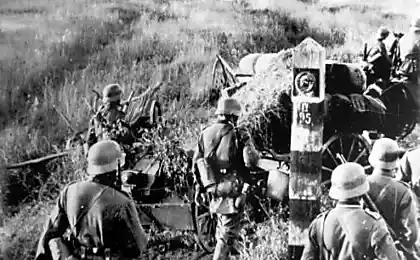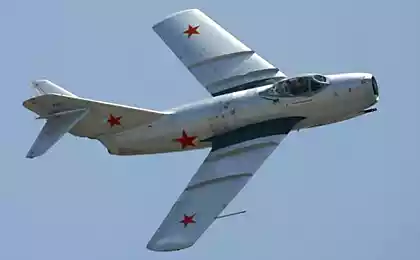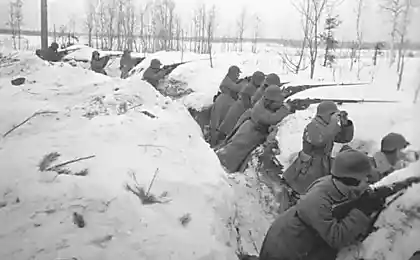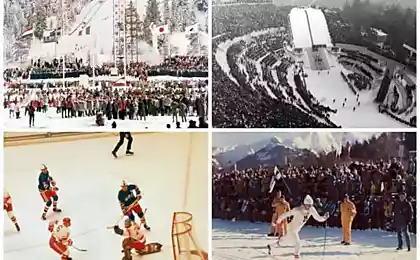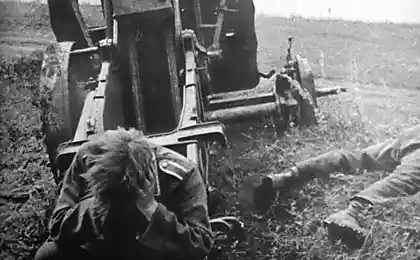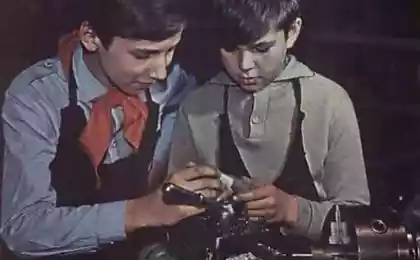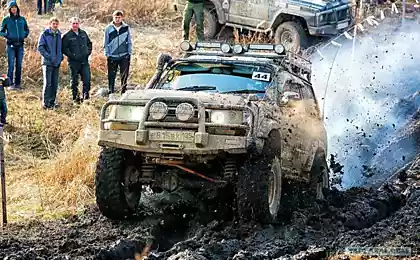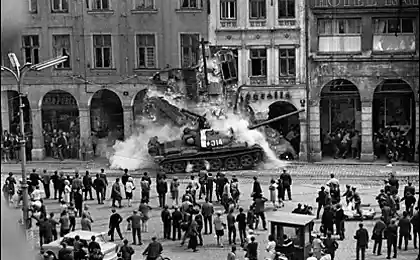729
Soviet jeeps
They complained that not disclosed domestic theme here?
Well, we will disclose. I repeat once again - my posts published here are in no way do not claim to encyclopedic coverage and completeness of the material. For those interested in the subject there are many Next Literature and resources on the network. I'm so superficial write a review that someone will be enough for the overall development, someone will force to study the subject in more detail, well, someone will smile condescendingly at all)
In the early thirties the most common way to increase permeability triaxial car was the creation of structures with two rear driving axles. And if the serial Soviet truck at the time of GAZ-AAA, the ZIS-6 and PT 10 third axis is necessary not only to improve cross as payload, the experimental vehicles of the same type GAZ-TC, created on the basis of cars GAZ-A ( Licensed Ford-A, who do not know) were built solely to achieve the off-road ability:
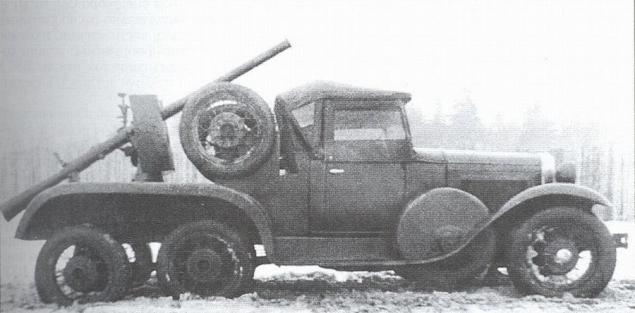
A later version of the GAZ-21 in 1937 (not to be confused with the "Volga") has been built on the basis of
"Emka" GAZ-M1, as well as the first hero of my story:
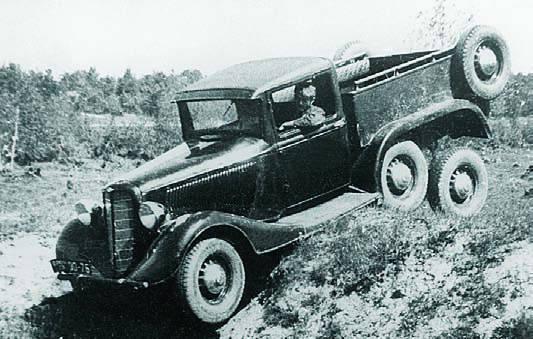
However, the GAZ-21 proved a dead end of this thread. The US experience with their Marmon-Herrington and others proved that the future of all-wheel drive designs.
The first such machine in the USSR was created under the direction of the Gorky Automobile Plant designer Vitaly A. Grachev, who, however, built and GAZ-21. On the basis of serial GAZ-M1, known as "Emka" GAZ then create a modernized GAZ-11, which differed from the prototype primarily, a more powerful six-cylinder engine GAZ-11.
GAZ-11 was almost a copy of the American Motor Dodge D5, only pererabotynnym under the metric system, and the first samples of the GAZ-11, and all were set purchased in the United States Engines Dodge, and the earliest samples and externally from the M1 no different - it is after six-cylinder cars were a new, more modern grille. And so, on the basis of more pilot GAZ-11-40 (digression - the nomenclature of the then cars had double index - chassis model and the model of the body. 11-40 - convertible in the lineup GAZ-11) Grachev in June 1939, and created a four-wheel drive GAZ-61-40:
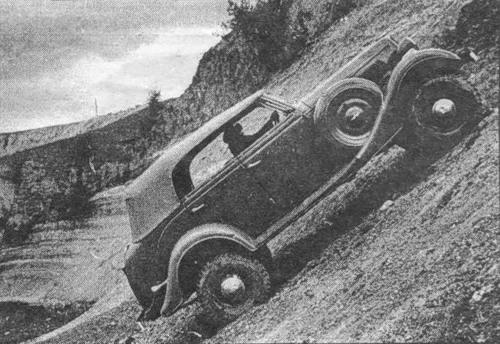
Series - well, as small-scale their production began only in 1941. The first six cars were built with an open body (GAZ-11-40), five of them were handed over to military commanders Voroshilov, Budyonny, Timoshenko, Zhukov and Rokossovsky . However, winter operation showed unsuitability of the open car bodies such purpose, and these machines in spring 1942 were retrofitted closed body of GAZ-11-73:
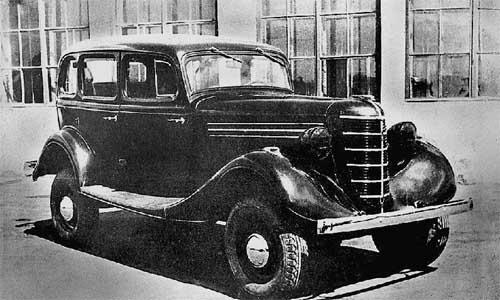
It is also equipped with closed body and the remaining 194 GAZ-61 (more correctly, of course, 61-73), issued during World War II. Overall, despite the modest volume of production, the car GAZ-61-73 can be considered as the first production car in the class
luxury SUVs such as the Range Rover (By the way ... and if I do not write about the history of Range? There's also a lot of interesting ...):
On the basis of GAZ-61-73 was built two copies of an experienced pickup - Artillery tractor GAZ-61-415:

Also released 36 arttyagachey GAZ-61-417 with a simplified open cockpit:
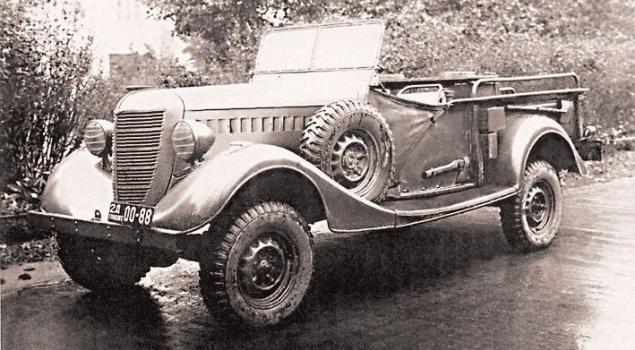
GAZ-61-73:
Engine: GAZ-11, gasoline, carburetor, inline six-cylinder.
Volume: 3480 cm3
Power: 85 horsepower at 3600 rev / min
Gearbox manual, four-stage
Length: 4800 mm
Width: 1770 mm
Height: 2080 mm
Clearance: 215 - 235 mm, depending on the tire.
Wheelbase: 2845 mm
Weight: 1650 kg
Max. speed: 105 km / h
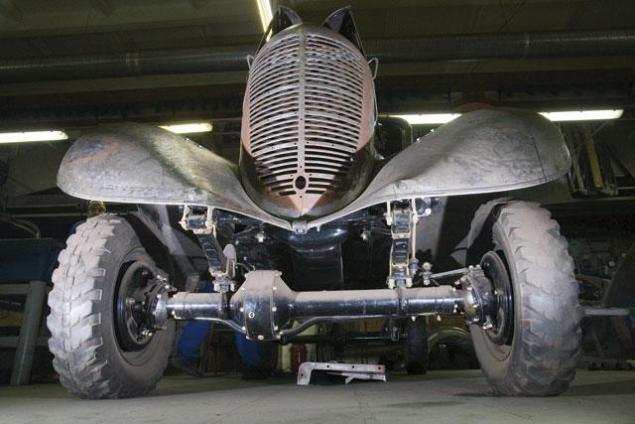
Source:
Well, we will disclose. I repeat once again - my posts published here are in no way do not claim to encyclopedic coverage and completeness of the material. For those interested in the subject there are many Next Literature and resources on the network. I'm so superficial write a review that someone will be enough for the overall development, someone will force to study the subject in more detail, well, someone will smile condescendingly at all)
In the early thirties the most common way to increase permeability triaxial car was the creation of structures with two rear driving axles. And if the serial Soviet truck at the time of GAZ-AAA, the ZIS-6 and PT 10 third axis is necessary not only to improve cross as payload, the experimental vehicles of the same type GAZ-TC, created on the basis of cars GAZ-A ( Licensed Ford-A, who do not know) were built solely to achieve the off-road ability:

A later version of the GAZ-21 in 1937 (not to be confused with the "Volga") has been built on the basis of
"Emka" GAZ-M1, as well as the first hero of my story:

However, the GAZ-21 proved a dead end of this thread. The US experience with their Marmon-Herrington and others proved that the future of all-wheel drive designs.
The first such machine in the USSR was created under the direction of the Gorky Automobile Plant designer Vitaly A. Grachev, who, however, built and GAZ-21. On the basis of serial GAZ-M1, known as "Emka" GAZ then create a modernized GAZ-11, which differed from the prototype primarily, a more powerful six-cylinder engine GAZ-11.
GAZ-11 was almost a copy of the American Motor Dodge D5, only pererabotynnym under the metric system, and the first samples of the GAZ-11, and all were set purchased in the United States Engines Dodge, and the earliest samples and externally from the M1 no different - it is after six-cylinder cars were a new, more modern grille. And so, on the basis of more pilot GAZ-11-40 (digression - the nomenclature of the then cars had double index - chassis model and the model of the body. 11-40 - convertible in the lineup GAZ-11) Grachev in June 1939, and created a four-wheel drive GAZ-61-40:

Series - well, as small-scale their production began only in 1941. The first six cars were built with an open body (GAZ-11-40), five of them were handed over to military commanders Voroshilov, Budyonny, Timoshenko, Zhukov and Rokossovsky . However, winter operation showed unsuitability of the open car bodies such purpose, and these machines in spring 1942 were retrofitted closed body of GAZ-11-73:

It is also equipped with closed body and the remaining 194 GAZ-61 (more correctly, of course, 61-73), issued during World War II. Overall, despite the modest volume of production, the car GAZ-61-73 can be considered as the first production car in the class
luxury SUVs such as the Range Rover (By the way ... and if I do not write about the history of Range? There's also a lot of interesting ...):
On the basis of GAZ-61-73 was built two copies of an experienced pickup - Artillery tractor GAZ-61-415:

Also released 36 arttyagachey GAZ-61-417 with a simplified open cockpit:

GAZ-61-73:
Engine: GAZ-11, gasoline, carburetor, inline six-cylinder.
Volume: 3480 cm3
Power: 85 horsepower at 3600 rev / min
Gearbox manual, four-stage
Length: 4800 mm
Width: 1770 mm
Height: 2080 mm
Clearance: 215 - 235 mm, depending on the tire.
Wheelbase: 2845 mm
Weight: 1650 kg
Max. speed: 105 km / h

Source:
